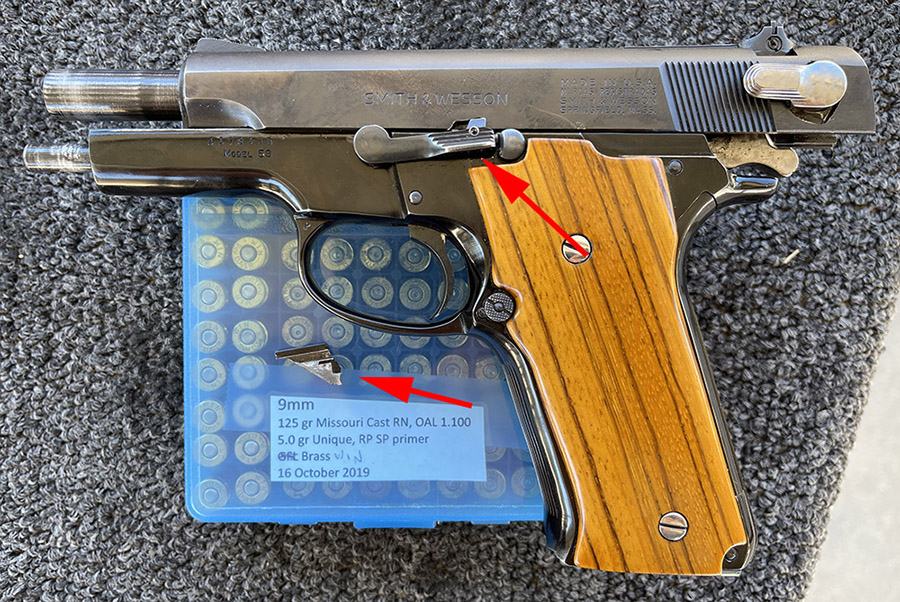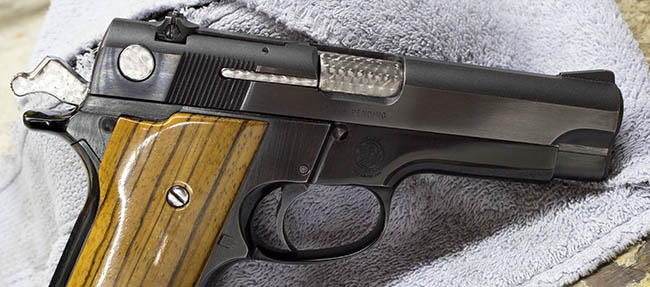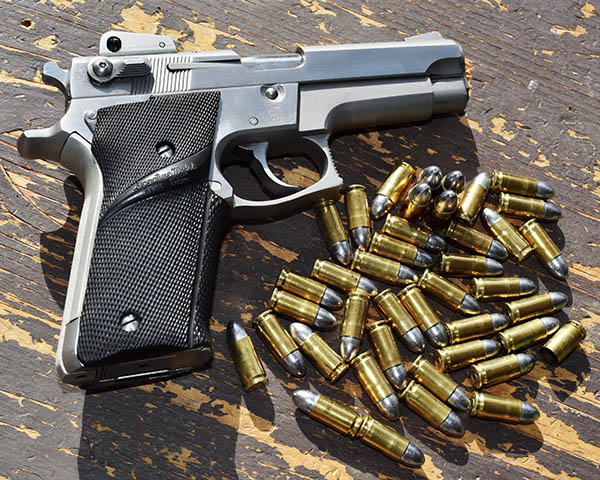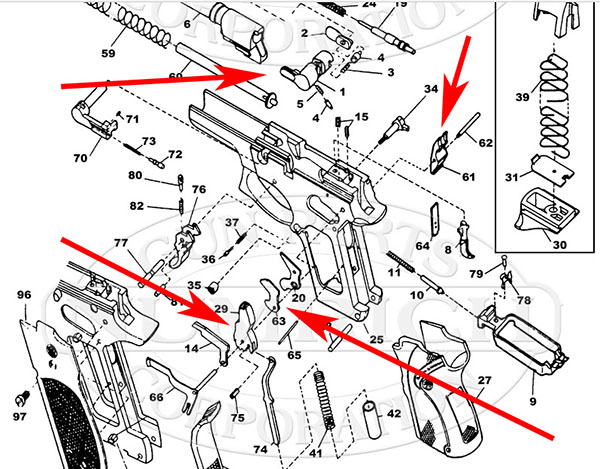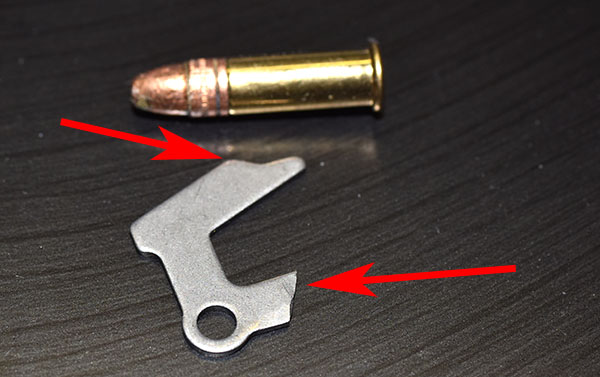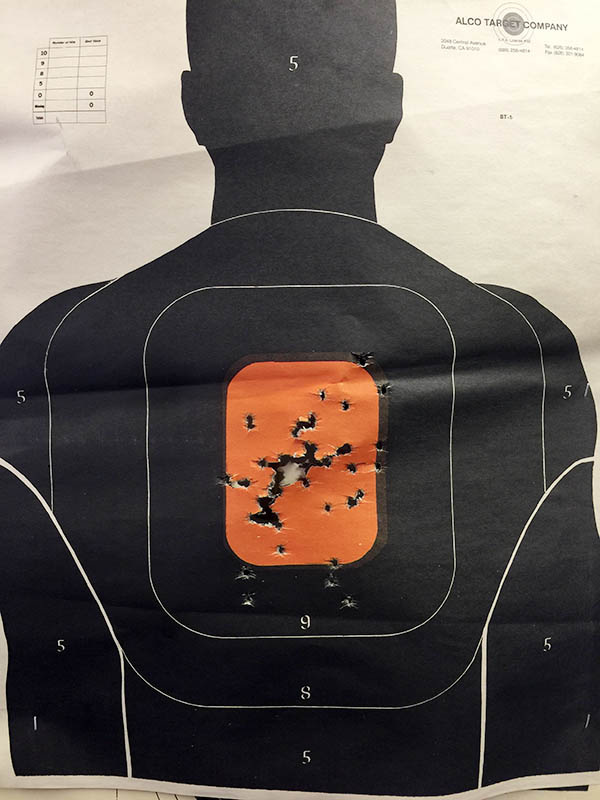Well, I had a good day on the range until my Model 59 broke. It’s the gun my father bought for me before I went overseas and I’ve had it for 50 years. I was having fun and I’d just fired 80 rounds at a 25 yard target. I went to put the next magazine in and it wouldn’t seat. Uh oh. When I pulled it out, the piece you see above fell from the magazine well. I pulled the slide release, dropped the slide, and wowee. This wasn’t good. Or maybe it was (more on that in a second).
Please click on the popup ads…it’s what keeps the blog going!
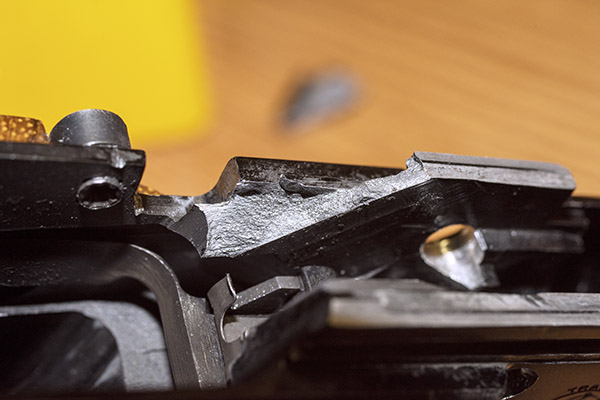
Ugly, ain’t it? Surprisingly, the surface fractography doesn’t look like a fatigue failure (there are no characteristic beach marks). I make it to be a brittle failure.
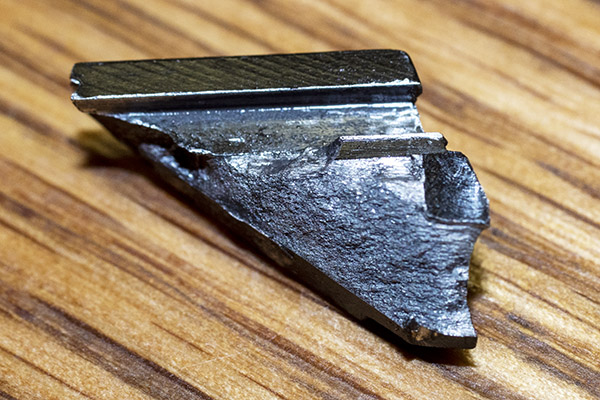
The photo below is my beautiful jeweled Model 59 barrel, all dressed up with no place to go. The arrows point to the ramps on either side of the chamber (the photo below shows the ramps on the left side). Those ramps are what smack into the aluminum frame with each shot.
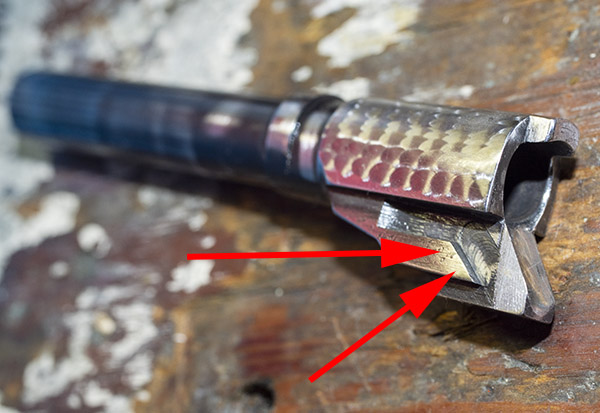 The arrows in the next pic point to the matching right side of the Model 59 frame. Note the worn area. It’s where the barrel ramp contacts the frame ramp when the gun recoils. That ramp (along with the mating ramp on the barrel) drops the barrel slightly to disengage it from the slide when the slide moves to the rear. You can see this area took a beating over the last 50 years. The photo shows the opposite side of the frame, where it didn’t break.
The arrows in the next pic point to the matching right side of the Model 59 frame. Note the worn area. It’s where the barrel ramp contacts the frame ramp when the gun recoils. That ramp (along with the mating ramp on the barrel) drops the barrel slightly to disengage it from the slide when the slide moves to the rear. You can see this area took a beating over the last 50 years. The photo shows the opposite side of the frame, where it didn’t break.
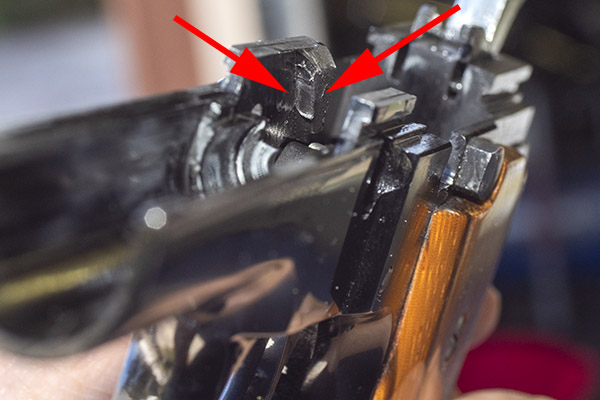
You might think I’m mad at the gun, but I’m not. I have a good dose of mechanical empathy. Imagine you are that aluminum ramp on the Model 59 when a 9mm cartridge lights off and the barrel is recoiling toward you at speed. WHAM! Do that 20,000 or 30,000 times in a row and think about how you would feel. Nope, the Model 59 did its job for 50 years. I can’t be mad at it.
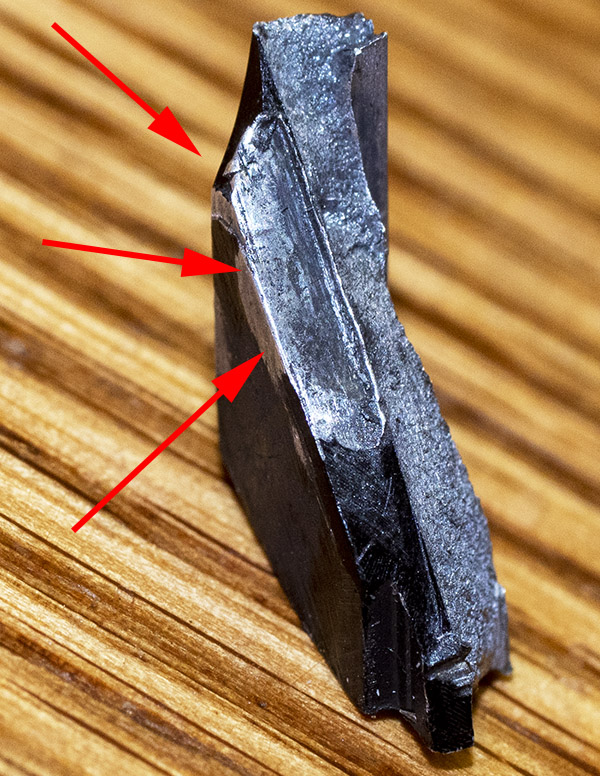
You read that right. I had 50 years of fun with my Model 59 on the range, carrying it on hunting trips, keeping it handy when I felt I needed to, and on one occasion, threatening a late night marsupial Sue thought was a burglar (the ‘possum was not impressed). I’ve fired between 20,000 and 30,000 rounds through my Model 59 (a guess based on how many boxes of 9mm I’ve reloaded). Very few of these (maybe none) were light loads, as the best 9mm accuracy is at the top of the spectrum. From what I’ve found in the endless stream of what passes for information on the Internet, semi-auto aluminum handgun frame life expectancy estimates are around 10,000-20,000 rounds, so I’m in the zone. Maybe I’m even ahead of the game.
I figure the cost of my reloaded 9mm ammo is about $.15 per round, so if I fired 20,000 rounds through this gun, that’s $3K in ammo. Dad paid something like $135 for the Model 59 back in 1972. Ignoring inflation, the ammo costs make the gun the least expensive part of the deal. Somehow that makes the fact that my Model 59 is toast slightly less bothersome. I probably could part it out (grips, slide, barrel, jeweled parts, etc.), but I don’t think I will. My buddies suggested putting it in a wooden frame and hanging it on the wall. That sounds like a good idea. I guess I can’t bitch too much. 50 years of service ain’t too shabby.
Some of you might be wondering why I don’t just get the gun repaired. It can’t be fixed; even Smith and Wesson told me it’s a goner. They didn’t offer to buy it back like Ruger did when I wore out a .357 Mag Blackhawk, but hey, Ruger is Ruger and Smith is Smith. One of my friends said I should buy a new 9, and I’m ahead of the curve on that, too. I bought a SIG P226 Scorpion a year or two ago. The SIG is the finest 9mm handgun I’ve ever owned, a worthy successor to the Model 59. If it lasts 50 years like the Model 59 did, I’ll be 120 years old and I’ll feel like I got my money’s worth with it, too.
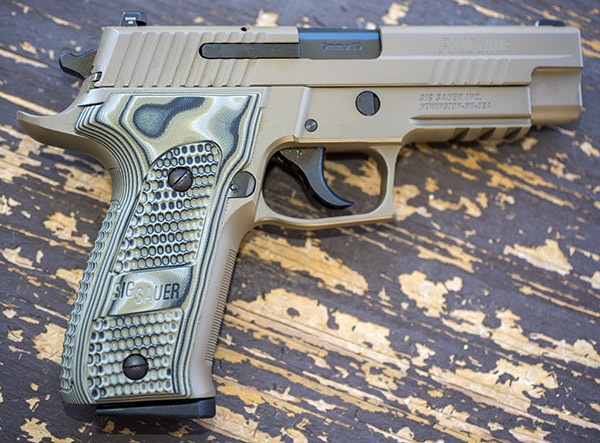
More Tales of the Gun are here!
Never miss an ExNotes blog!

